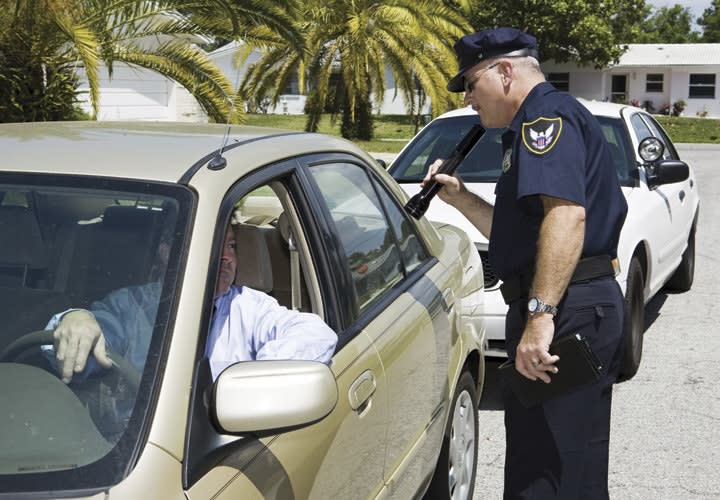"The use of field glasses or the telescope to magnify the object of a witness's vision is not a forbidden search or seizure, even if they focus without his knowledge or consent upon what one supposes to be private indiscretions. We find no violation of the Fourth Amendment here."
This language means that officers may use binoculars or telescopes to look into windows from a distant observation point in order to see whatever the criminal has carelessly exposed to plain view in the mistaken belief that his activities cannot be seen by anyone. As the court said in another case, "The mere fact that an individual has taken measures to restrict some views of his activities does not preclude an officer's observations from a public vantage point where he has a right to be and which renders the activities clearly visible. What a person knowingly exposes to the public, even in his own home or office, is not a subject of Fourth Amendment protection." (California v. Ciraolo)
Texas V. Brown
Ft. Worth Police were running a driver's license checkpoint one night when a car driven by Clifford Brown was stopped. While the officer was waiting for Brown to find his license, he shined his flashlight into the car and saw a balloon of heroin and other drug-related items. Charged with possession of heroin, Brown sought suppression of the contraband that came into the officer's view through use of the flashlight. The Supreme Court, citing to 15 decisions from various state and federal courts rejecting the argument that illumination invalidates plain view, said this:
"It is beyond dispute that the officer's action in shining his flashlight to illuminate the interior of Brown's car trenched upon no right secured to the latter by the Fourth Amendment. Numerous other courts have agreed that the use of artificial means to illuminate a darkened area simply does not constitute a search, and thus triggers no Fourth Amendment protection."













